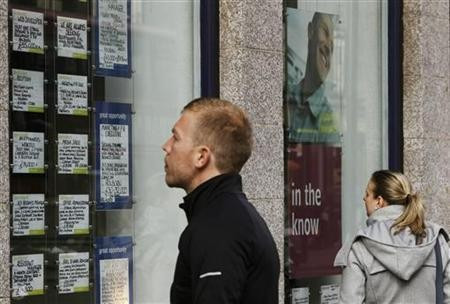UK Long-Term Unemployment Creeps up Amid Government Work Programme Criticism

Long-term unemployment rose by 11,000 between February and April in the UK on the quarter before amid criticism that the government's flagship welfare-to-work scheme, the Work Programme, is failing.
Data from the Office for National Statistics (ONS) shows there are now 898,000 people who have been out-of-work for more than a year.
The unemployment rate was unchanged at 7.8% on the quarter, though the level fell 5,000 to 2.51 million. Employment sunk 0.1% to a rate of 71.5%, though the level lifted by 24,000 in the three month period to 29.76 million.
Job Seeker's Allowance claimants dropped 8,600 on the month in May, to 1.51 million. On the year it had fallen by 87,600.
Across the year, total pay rose by 1.3%. Regular pay rose by just 0.9%, falling well short of price inflation as the real terms cut continues.
As real pay sinks, total hours worked per week soars. Total hours worked per week were 950.5 million for February to April, up 20.2 million on the year.
UK youth unemployment, which has been the focus of concern across the troubled EU, fell during the period.
"In accordance with international guidelines, people in full-time education (FTE) are included in the youth unemployment estimates if they have been looking for work within the last four weeks and are available to start work within the next two weeks," said the ONS.
Excluding those in full-time education included in the headline youth unemployment figure, 659,000 were unemployed between February and April, down 13,000 on the quarter and at a rate of 18.9%.
Work Programme
The Work Programme uses private contractors to help lift the long-term unemployed - those out of a job for more than a year - into sustained employment.
These providers are then paid by performance, but the first set of data to emerge from the Work Programme showed a lower success rate than the government had predicted should the scheme not even have existed in the first place.
It helped just 3.6% of its participants off benefits and into work during its first 14 months.
The Department for Work and Pensions' (DWP) target was 5.5%.
MPs on the Public Accounts Committee labelled the scheme "extremely poor" and that it was failing the hardest-to-help in particular, such as the disabled, accusing providers of side-lining them in favour of easier cases because the cash incentives built into the system were not working.
"While we recognised that it is early days for the Work Programme, such poor performance undermines the confidence in its long-term success," said the PAC, which has taken evidence from ministers and service providers.
"The DWP needs a better understanding of the factors that led to early performance being well below expectations in order to assess whether the longer term targets for the Work Programme are still achievable."
A separate group of MPs on the Work and Pensions Committee (WPC) backed up the PAC's findings in their own report.
"It is clear that the differential pricing structure is not a panacea for tackling creaming and parking," said Dame Anne Begg MP, WPC chairwoman.
"The Government must do more to ensure that the Work Programme provides effective support for all jobseekers, not just the ones who are easiest to help."
The WPC also found that caseworkers were being overloaded and struggled to keep up, with some having been given caseloads of between 120 to 180 each.
"This ratio is simply far too high for an effective service and must be brought down," said the WPC report.
© Copyright IBTimes 2025. All rights reserved.





















